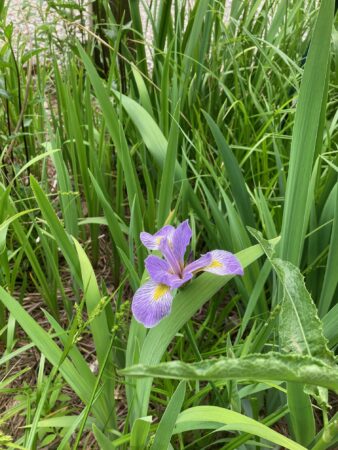Iris is the largest genus in the plant family Iridaceae comprised of about 300 species of plants. The name “Iris” comes from the Greek word for rainbow and is the same name as the Goddess of the rainbow Iris. Perhaps not surprisingly, irises can be any color of the rainbow, although, they are typically a shade of purple with yellow markings. Irises are native to the northern hemisphere from North America to Europe to Asia. They are popular in gardens. The artist Van Gogh painted several irises.
Morphology
Irises are monocots (grasses and grass-like flowering plants), and perennial (regrow over multiple growing seasons) that grow from a bulb or rhizome. The leaves are flat, grass-like, and grow in a fan-shape arrangement arising from the bulb or rhizome.
The flowers consist of 6 petals – 3 drooping and 3 upright in the middle. The upright petals are called “standards” and the drooping petals are called “signals”. There are 3 stigma branches as well.
Uses
Irises are the source of many artists inspirations. A beautiful, striking, and unique-looking flower – it makes sense why they are so loved. They are the state flower of Tennessee. Irises are commonly used in Japanese flower arrangements. They are also the source of orrisroot, a component of perfume. Irises are a very popular plant to grow in gardens since they produce beautiful flowers, are perennial, and relatively easy to grow.


If you enjoyed this plant profile on irises, check out this plant profile all about violets.

